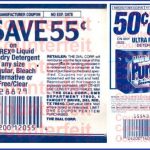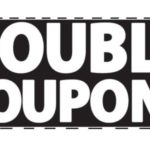
Long before Stephanie Nelson became “Coupon Mom,” before Jill Cataldo was “Super-Couponing” and before Coupons in the News began covering coupons in the news, a generation of grocery shoppers learned the best ways to shop, and save, by faithfully reading the work of Martin Sloane, “The Supermarket Shopper.”
As we approach the end of a tumultuous year in which many otherwise noteworthy events got a little lost in the shuffle, it seems an appropriate time to highlight one of these overlooked events, by reflecting on the legacy of Sloane, the author and longtime newspaper columnist. He passed away in March of this year, at the age of 79.
For more than a quarter century, from 1979 to 2005, Sloane wrote a twice-a-week syndicated newspaper column that reached millions of readers, in more than 400 newspapers across the country. He covered the grocery industry from a consumer’s perspective, answering readers’ questions about everything from prices and promotions, to mysteriously-shrinking package sizes. He allowed readers to vent about everything from overly chatty cashiers to shopping carts with wonky wheels. He advocated for safety measures like shopping cart seat belts for children, and invited entries into his quirky annual “Supermarket Shopper Poetry Competition.”
And he answered innumerable questions about how to save money with coupons, decades before the internet and a certain reality TV show turned couponing into a modern-day craze.
Coupons, of course, were invented long before any of us were alive, and their use grew steadily throughout the last century. But it wasn’t until the 1970’s that couponing as we know it exploded in popularity and became something of a way of life. The combination of soaring consumer prices and runaway inflation, together with innovations like easily-scannable coupon bar codes and the first Sunday newspaper coupon inserts, made people realize that coupons were an increasingly convenient way to save some serious money.
It was around this time that Sloane started his own “Supermarket Shopper” magazine, which led to his newspaper column, followed by books, and numerous TV appearances. “Couponing has gone beyond casual clipping to become another way to beat inflation,” his inaugural column declared in 1979. Sloane explained to his new readers how he had “developed a system for organizing cash-off coupons… that can save as much as 40 to 90 percent on brand name products” – officially launching what would become a 26-year run.
In a time before endless media options and hundreds of coupon blogs, Sloane was both the trusted friend and the voice of authority – the “Dear Abby” of the grocery store – for those seeking advice, assistance and answers about couponing and grocery shopping.
“As a child and then as a teenager, I remember my father endlessly typing away to write his column on an IBM Selectric typewriter (and then on an IBM personal computer) in the basement of our house. He was a workaholic in the best possible sense and an entrepreneur who loved growing his own business,” his son Peter Sloane told Coupons in the News. “To this day, I am astounded that my father had the wherewithal to share his insights before hundreds of people at national conventions across the country and to appear on television and radio. I remember watching at home while my father was a guest being interviewed on the Today show in the 1980s! I could not have been prouder and more impressed.”
In more than 3,000 columns over the years, Sloane covered some of the most notable moments in the development of coupons as we’ve come to know them today. On-pack coupons, or “peelies,” became prominent during his tenure: “Are you noticing more coupons attached to product packages?” he asked in a 1995 column. Also introduced were in-store coupon “blinkie” machines, described at the time as “devices that are attached to shelves and print out coupons when a sensor is triggered.” And Catalina coupon machines began printing out personalized coupons based on your purchase history: “Do I really want to be ‘targeted’?” Sloane asked in 1996. “It sounds a little menacing, but if nothing more solid than coupons hits me, bring them on!”
Sloane also stood up for consumers in long-forgotten coupon controversies of the time, including a 1980 “war on coupons” in which a major grocery chain and an advisor to President Jimmy Carter condemned coupons and called for their elimination, in favor of lower everyday prices. “Isn’t it reasonable to assume that if manufacturers and food processors stopped offering coupons, they would spend these same advertising dollars elsewhere (in other words, they would not lower the prices of their products)?” Sloane wrote pointedly. “If the administration wants to show that it is doing something for the poor, advocating the elimination of cash-off coupons is not the way to do it.”
And in 1997, he was positively gleeful when Procter & Gamble’s “Zero Coupons” test in upstate New York failed. The company tried lowering prices and stopping the distribution of coupons, only to face a consumer uproar. “Procter & Gamble failed with Zero Coupons because it declared war on a consumer tradition that has become as important to shoppers as shopping carts and supermarkets,” Sloane wrote. “P&G mistakenly thought its negative publicity concerning coupons would result in consumers burning Sunday coupon inserts in town square rallies. It was dead wrong.”
Over the course of his career, Sloane also chronicled the rise of double and triple coupons, the advent of loyalty programs (“I am convinced that this is the wave of the future in supermarket retailing,” he wrote in 1994), and the introduction of what was possibly the most consequential invention of our times: “You have probably heard about the Internet. It has become big news,” he wrote in a 1995 column. “I scrolled down the screen to a form, where I typed in my name and address. Then I clicked a ‘send’ button. That’s all it took,” he wrote in wonder about visiting a brand’s website for the first time to request that coupons be sent to him – via mail. A year later, an even newer innovation had him “hooting for joy at the prospect of grocery coupons rolling off the Internet and onto my computer printer.”
His predictions weren’t always prescient: “By the year 2000 most coupons will be distributed electronically,” he once predicted. Who knew that paper coupons would still dominate two decades later? And, to a 1990’s reader who envisioned shoppers someday strolling down supermarket aisles with a cellular phone in hand to help them compare prices, Sloane responded, “I’m not so sure. Most shoppers, even those who get a thrill out of hunting for bargains, will not want to complicate the shopping chore more than necessary.”
Other predictions, though, were spot on. Manufacturers might want to be wary of print-at-home coupons, he warned in 1996. Unethical consumers might “purchase a computer-graphics program that gives you the power to take an image off the Internet and change it on your personal computer. Can you imagine being able to play with a manufacturer coupon and make changes?… That is a manufacturer’s nightmare!”
Indeed it was – and is. “I have come to understand that the solution to their problems may not be printing out coupons at all,” he concluded. “Instead, it would be a totally electronic discount credited to your grocery order, a form of clipless coupon.”
Sloane wrote his final column in 2005, after an eventful 26 years. “I have finally cashed in enough coupons, received enough refund checks and reached my goal. I can afford to retire,” he told readers. “When my first columns appeared in 1979, there were skeptics. What could I possibly find interesting enough about grocery shopping to write about every week? They just didn’t understand the universality and importance of the grocery-shopping experience, and the need to save money at the checkout counter.”
“One of the things my dad liked best about the work was reading and responding to the letters that he received from consumers across the country,” Peter Sloane said. “I remember that the mail would come in stacks piled in plastic crates from the post office. My dad really related to his readers’ trials and tribulations and enjoyed nothing more than sharing their successes in saving money with others and in coming up with new ideas for them to benefit from coupons and refunds.”
“My greatest source of satisfaction has been helping my readers save money on their groceries,” Sloane wrote in his final column. “It has been my greatest shopping adventure.” And those of us who write about coupons today for a new generation, are indebted to him for laying the groundwork for us all.
Image sources: Chicago Tribune/Family photo










